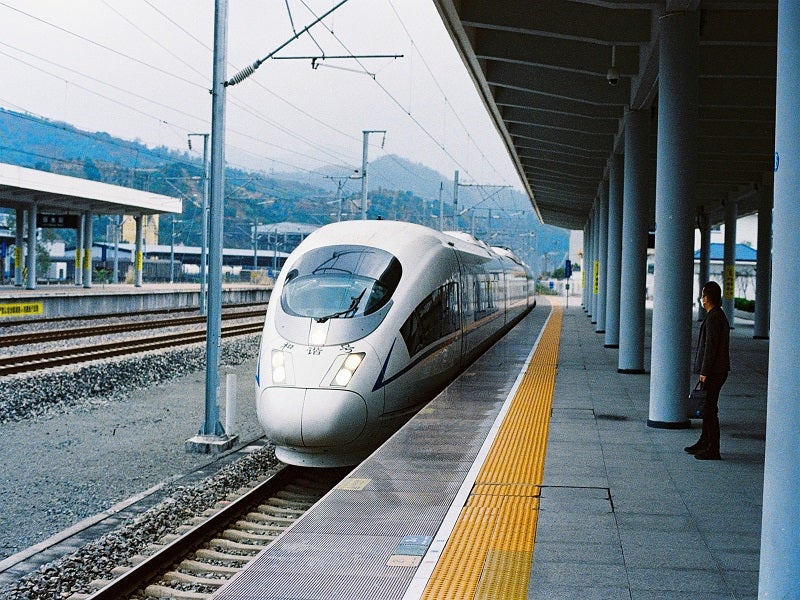
China has launched a customised Fuxing bullet train with the capacity to run at a top speed of 350km/hour.
As part of its inaugural journey, the train travelled along the high-speed railway connecting Beijing and Zhangjiakou, the co-host city of the Beijing Winter Olympic Games.

Discover B2B Marketing That Performs
Combine business intelligence and editorial excellence to reach engaged professionals across 36 leading media platforms.
The Beijing-Zhangjiakou high-speed railway will support passenger services for the 2022 Beijing Olympic and Paralympic Winter Games, which will run from 21 January to 16 March.
This train is said to be the world’s first high-speed train to feature a 5G live broadcast studio, which can broadcast content using 5G.
The eight-car electric multiple unit (EMU) bullet train will be able to accommodate more than 560 people, with one of the carriages including a media workspace.
The train will also include air-cleaning devices, lockers for ski gear and wheelchair-accessible spaces, as well as supporting the BeiDou Navigation Satellite System.

US Tariffs are shifting - will you react or anticipate?
Don’t let policy changes catch you off guard. Stay proactive with real-time data and expert analysis.
By GlobalDataCRRC Changchun Railway Vehicles engineering research centre deputy head Zhu Yan was quoted by Xinhua as saying: “More than 2,700 automatic inspection sensors in the train can collect data in real-time, and provide operation and maintenance suggestions after calculation.
“With older train models, all of the air conditioning filters had to be replaced regularly. With the filter pressure monitoring sensors, the section with the most serious dust blockage can be targeted for replacement.”
Passenger services on the Beijing-Zhangjiakou high-speed railway commenced in December 2019 with the aim of supporting inter-city traffic as well as the commute between the Olympic venues.
The route is said to be the first to achieve autonomous driving at a speed of 350km/hour.
By replacing human drivers, the autonomous driving system on the Zhangjiakou-Beijing journey is projected to reduce energy usage by up to 7%.
Last week, two metro tracks featuring Thales SEC Transport (TST) signalling systems entered revenue in China.





